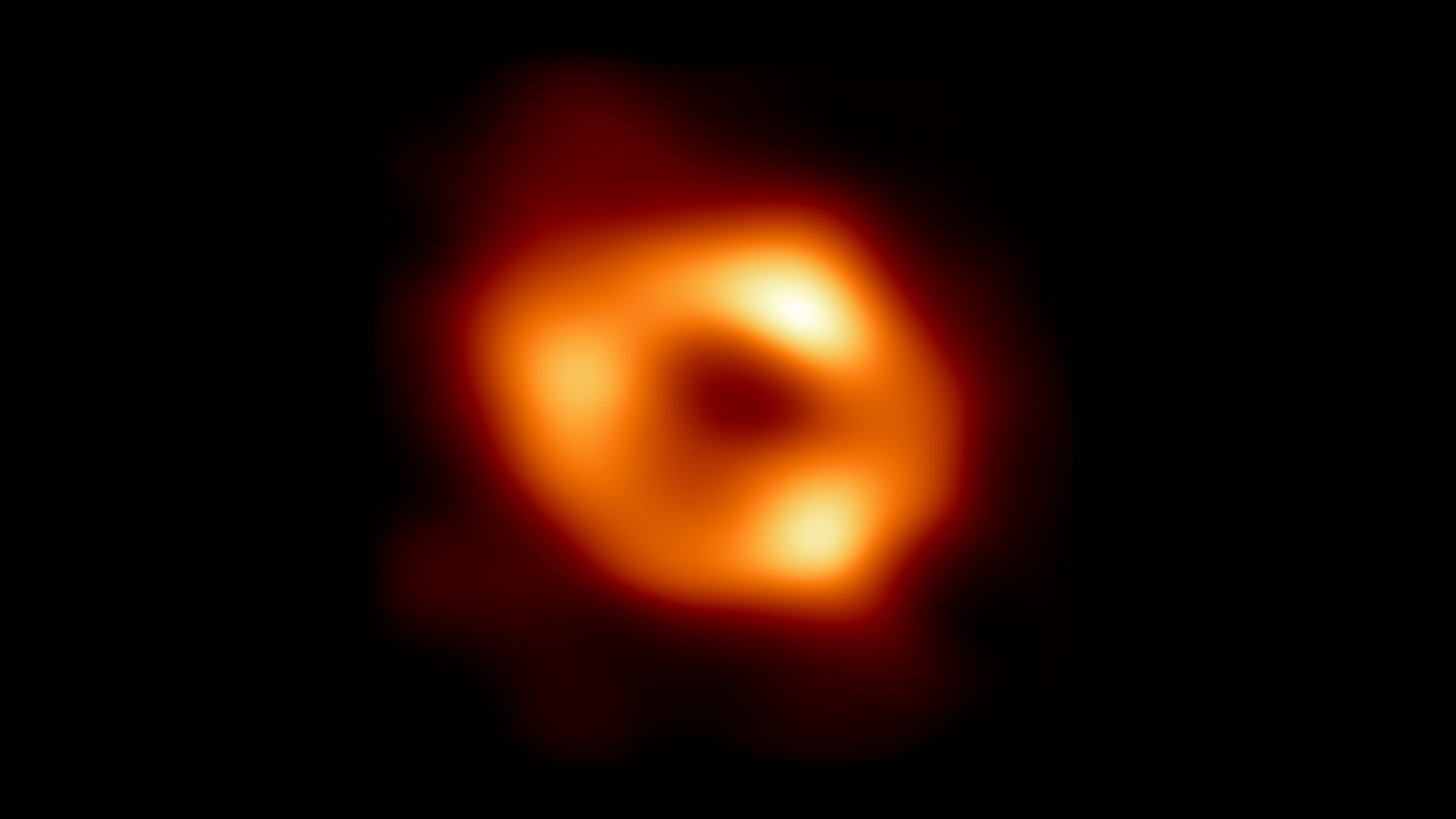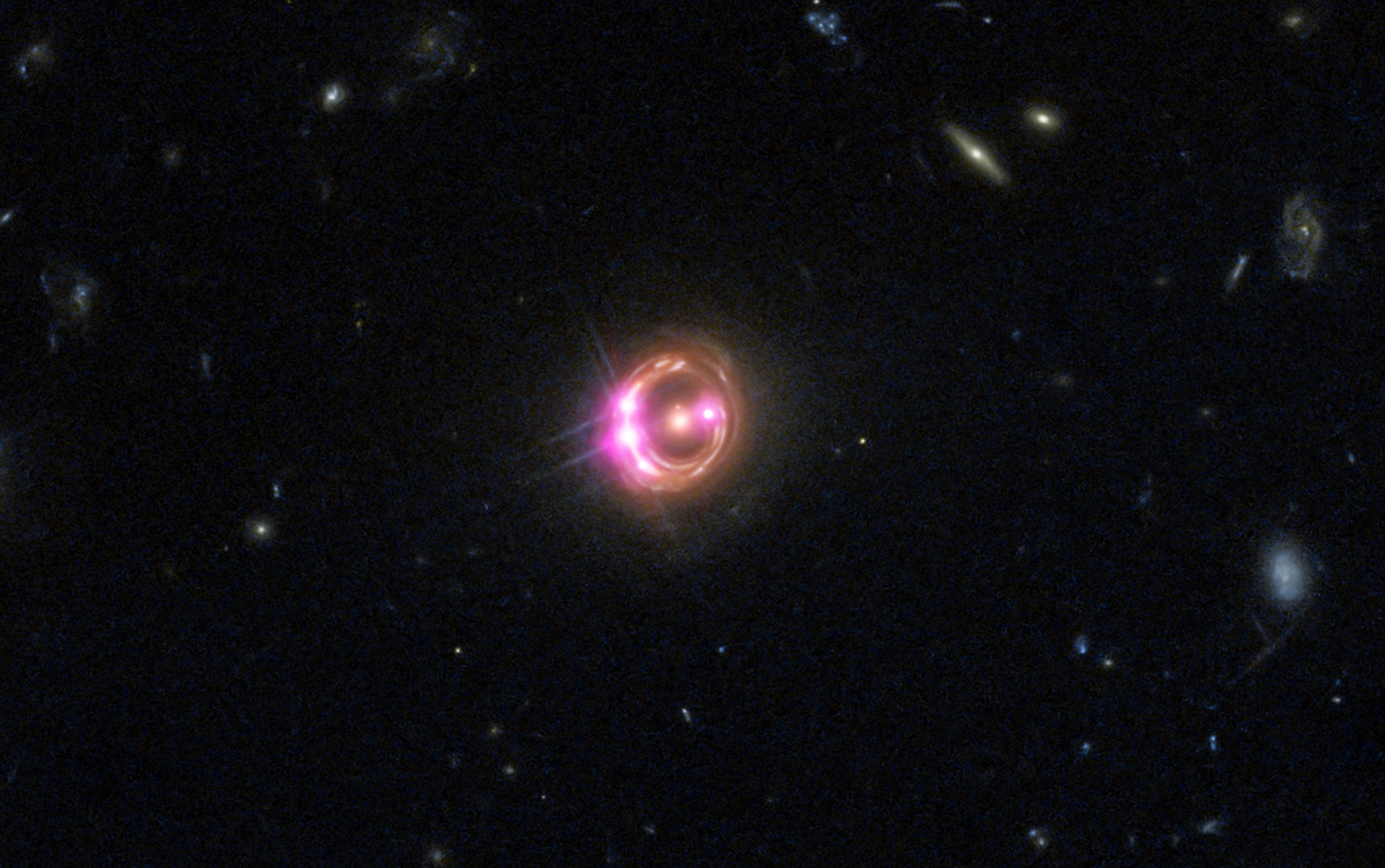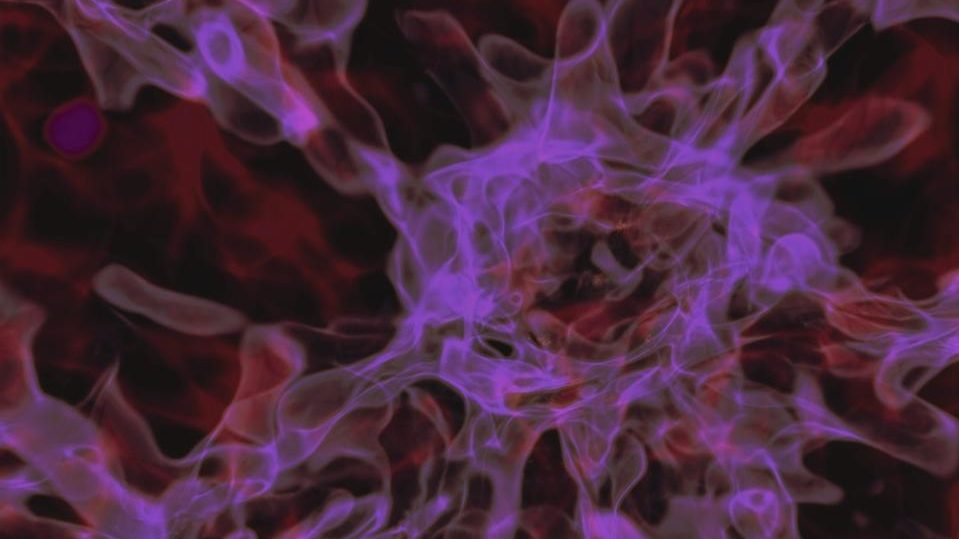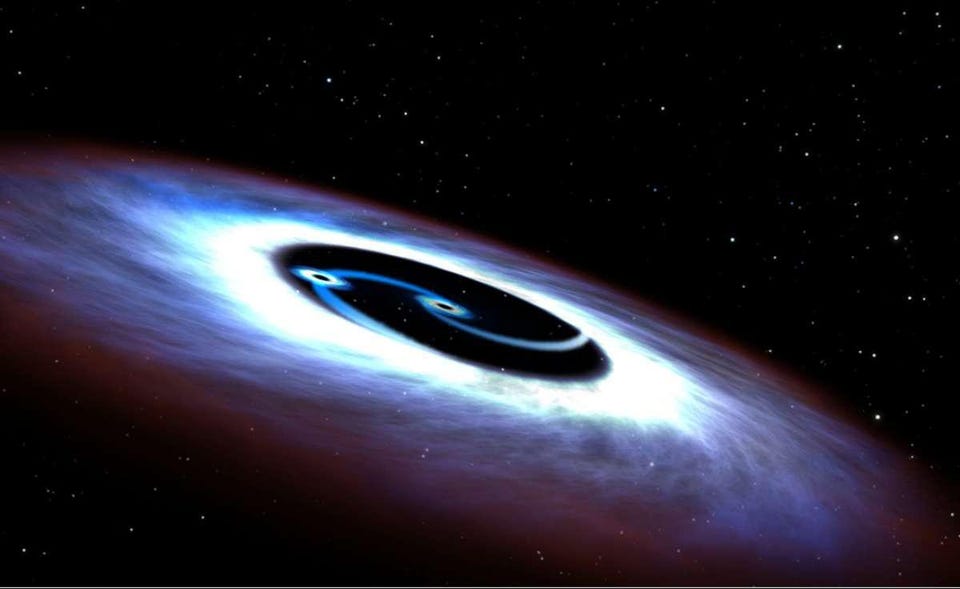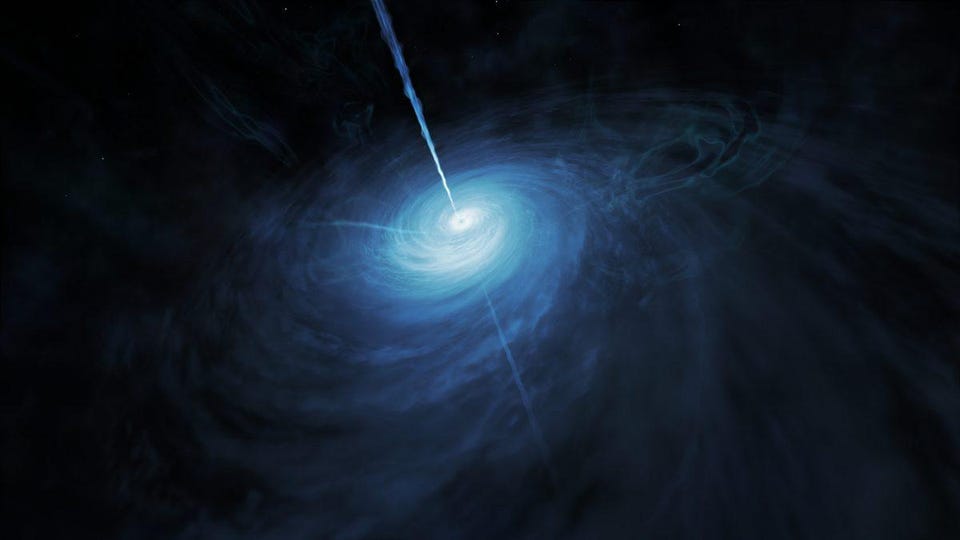Did the Milky Way lose its black hole?
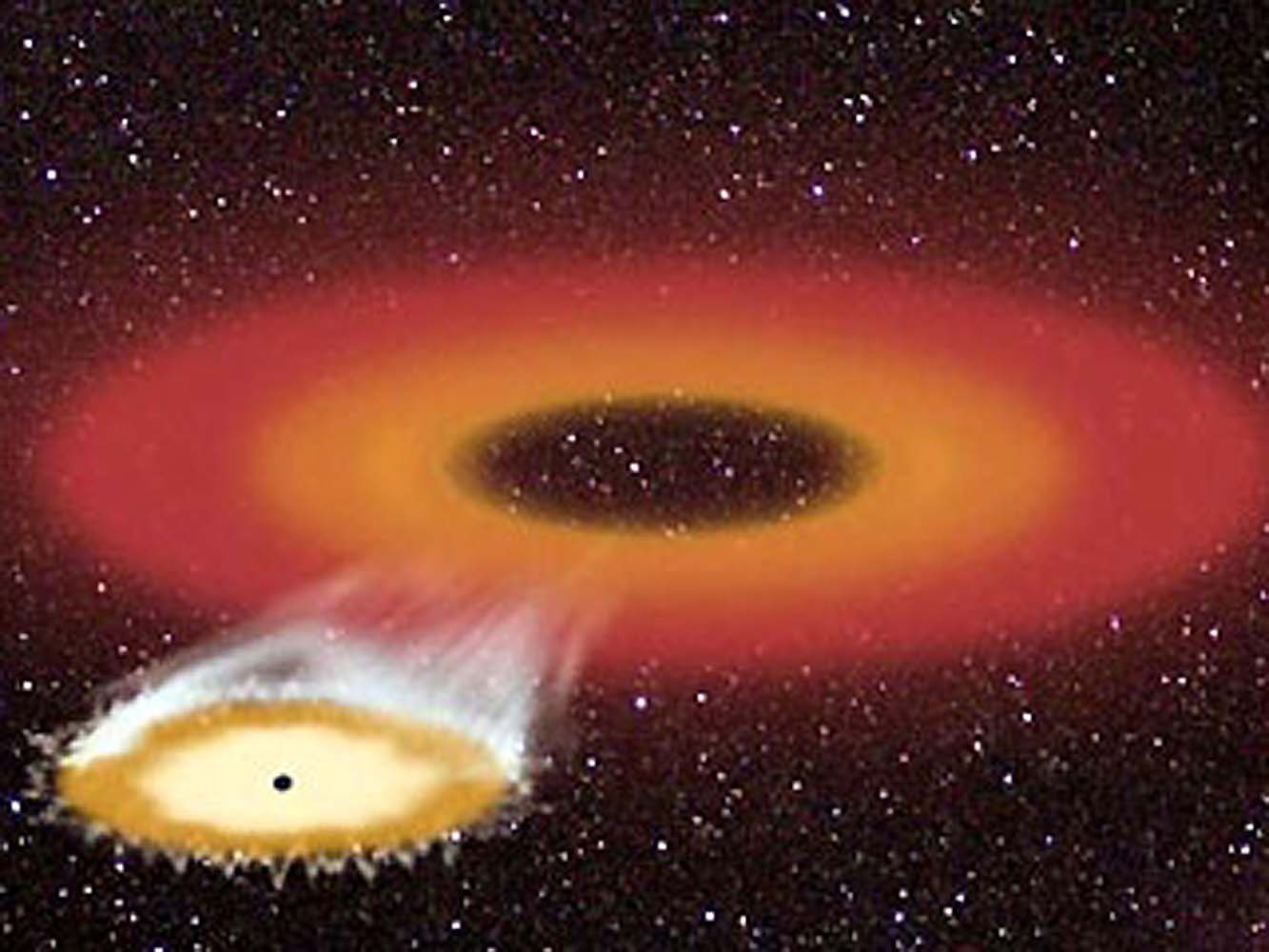
- While many Milky Way-sized galaxies have supermassive black holes that are a hundred million solar masses or more, ours weighs in at just 4 million Suns.
- At the same time, we have some very good evidence that the Milky Way wasn’t a newcomer, but is more than 13 billion years old: almost as ancient as the Universe itself.
- Rather than being on the unlucky side, our supermassive black hole might be the second of its kind: only growing up after the original was ejected. It’s a wild idea, but science may yet validate it.
At the heart of the Milky Way, a supermassive behemoth lurks. Formed over billions of years from a combination of merging black holes and the infalling matter that grows them, there now sits a mammoth black hole that weighs in at four million solar masses. It’s the largest black hole in the entire galaxy, and we’d have to travel millions of light-years away to find one that was more massive. From its perch in the galactic center, Sagittarius A* possesses the largest event horizon of any black hole we can observe from our current position in space.
And yet, despite how large, massive, and impressive this central black hole is, that’s only in comparison to the other black holes within our galaxy. When we look out at other large, massive galaxies — ones that are comparable to the Milky Way in size — we actually find that our supermassive black hole is on the rather small, low-mass side. While it’s possible that we’re simply a bit below average in the black hole department, there’s another potential explanation: perhaps the Milky Way once had a larger, truly supermassive black hole at its core, but it was ejected entirely a long time ago. What remains might be nothing more than an in-progress rebuilding project at the center of the Milky Way. Here’s the science of why we should seriously consider that our central, supermassive black hole might not be our galaxy’s original one.
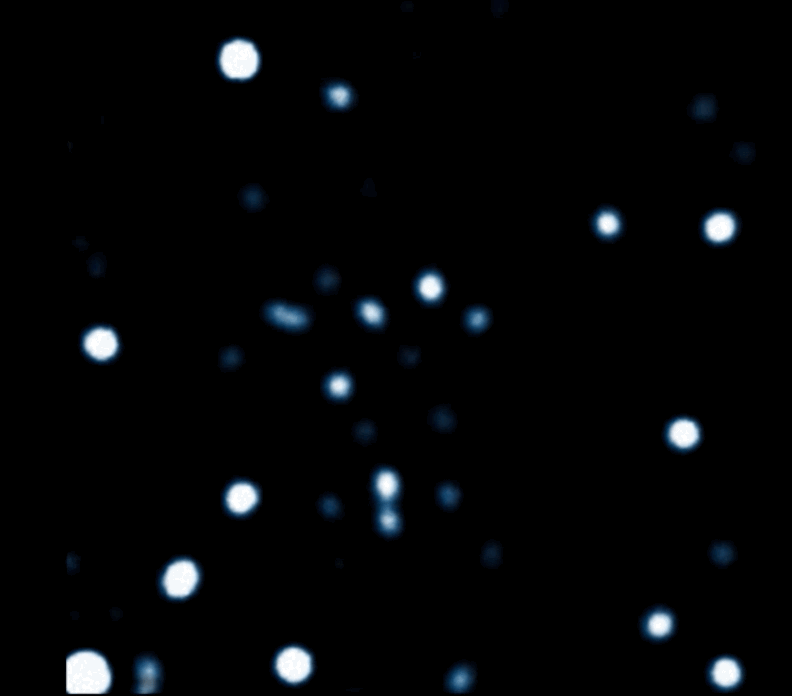
When we take a look around at the galaxies in our vicinity, we find that they come in a wide variety of sizes, masses and shapes. As far as spiral galaxies go, the Milky Way is fairly typical of large, modern spirals, with an estimated 400 billion stars, a diameter that’s a little bit over 100,000 light-years, and populations of stars that date back more than 13 billion years: just shortly after the time of the Big Bang itself.
While the largest black holes of all, often exceeding billions or even tens of billions of solar masses are found overwhelmingly in the most massive galaxies we know of — giant elliptical galaxies — other comparable spirals generally have larger, more massive black holes than our own. For example:
- The Sombrero galaxy, about 30% of the Milky Way’s diameter, has a ~1 billion solar mass black hole.
- Andromeda, the closest large galaxy to the Milky Way and only somewhat larger, has a ~230 million solar mass black hole.
- NGC 5548, with an active nucleus but bright spiral arms, has a mass of around 70 million solar masses, comparable to that of nearby spirals Messier 81 and also Messier 58.
- And even Messier 82, much smaller and lower in mass than our own Milky Way (and interacting neighbor of Messier 81) has a black hole of 30 million solar masses.
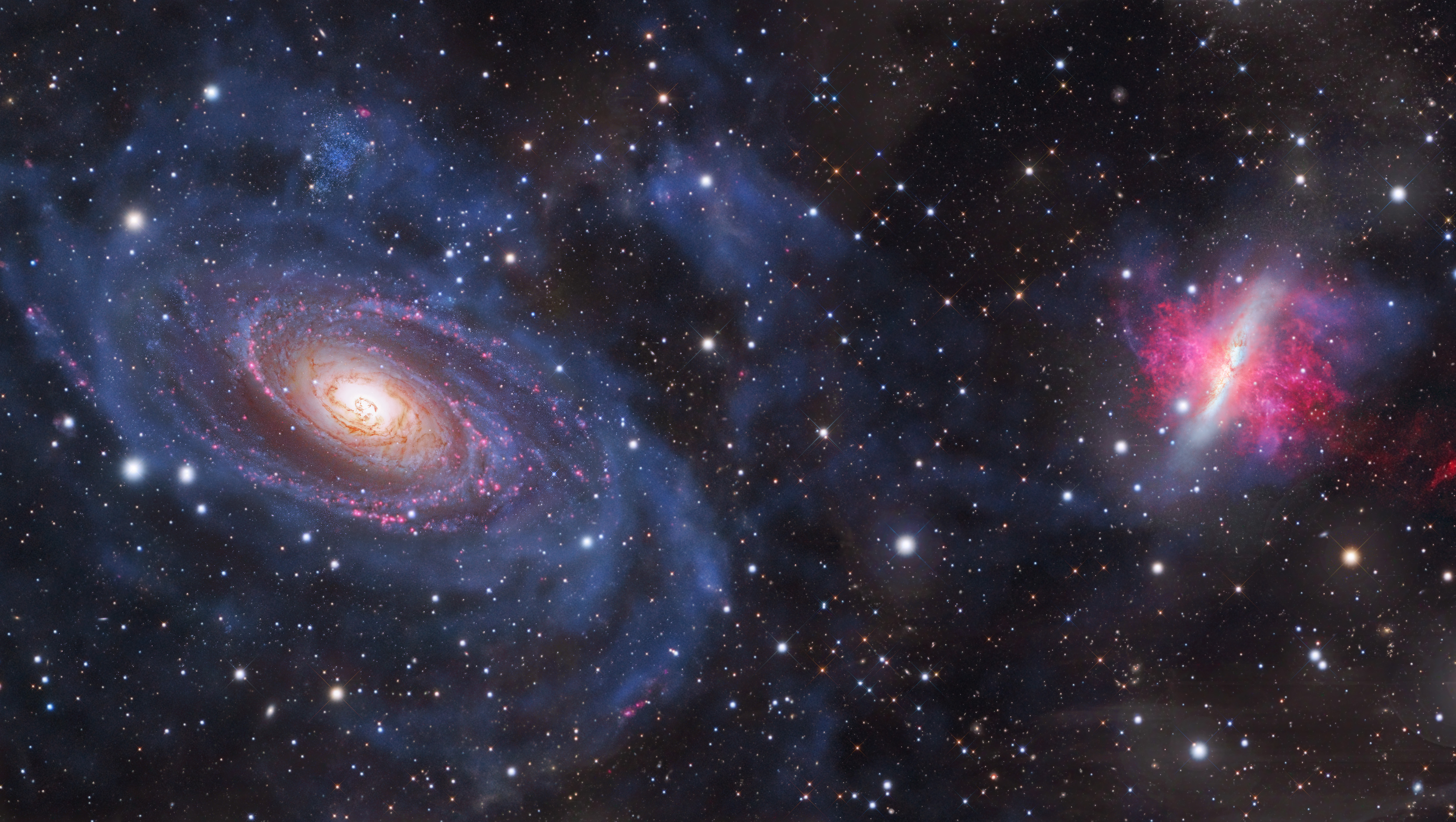
In fact, of all of the spiral or elliptical galaxies known to host supermassive black holes, the Milky Way’s is the least massive one known. Additionally, only a few substantial galaxies have supermassive black holes that are even in the same ballpark as Sagittarius A* at the center of the Milky Way. A few spirals — all smaller than the Milky Way — such as Messier 61, NGC 7469, Messier 108 and NGC 3783, all have black holes between 5 and 30 million solar masses. These are some of the smallest supermassive black holes known, and while larger than ours, they’re at least comparable to the Milky Way’s 4.3 million central black hole.
Why would this be the case? There are really only two options.
- The first option is that there are many, many galaxies out there, and they have a huge range of black hole masses that they can obtain. We’re only seeing the ones that are easiest to see, and that’s going to be the most massive ones. There may be plenty of lower mass ones out there, and that’s the type we just happen to have.
- The second option, however, is that we’re actually well below the cosmic average in terms of the mass of our supermassive black hole, and there’s a physical reason — related to the evolution of our galaxy — that explains it.
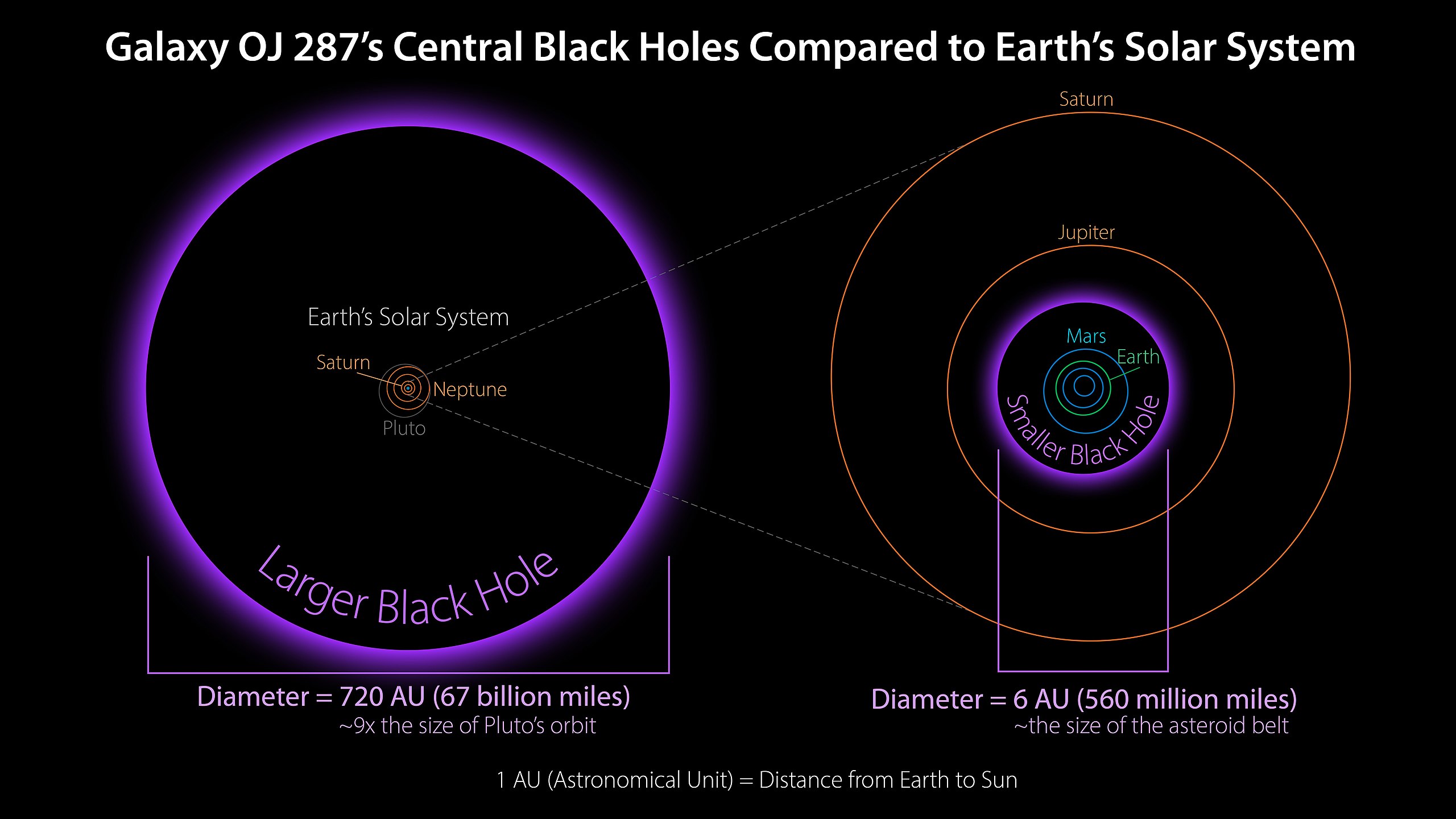
We’re still learning, of course, how supermassive black holes form, grow, and evolve in the Universe. We’re still attempting to figure out all of the steps for how, when galaxies merge, their supermassive black holes can successfully inspiral and merge on short enough timescales to match what we observe. We’ve only recently just discovered the first object in the process of transitioning from a galaxy into a quasar, an important step in the evolution of supermassive black holes. And from observing the earliest galaxies and quasars of all, we find that these supermassive black holes can grow up remarkably fast: reaching masses of around ~1 billion solar masses in just the first 700 million years of cosmic evolution.
In theory, the story of how they form is straightforward.
- The earliest stars are very massive compared to the majority of stars that form today, and many of them will form black holes of tens, hundreds, or possibly even 1000 or more solar masses.
- These black holes won’t just feed on the gas, dust, and other matter that’s present, but will sink to the galaxy’s center and merge together on cosmically short timescales.
- As additional stars form, more and more matter gets “funneled” into the galactic center, growing these black holes further.
- And when intergalactic material accretes onto the galaxy — as well as when galaxies merge together — it typically results in a feeding frenzy for the black hole, growing its mass even more substantially.
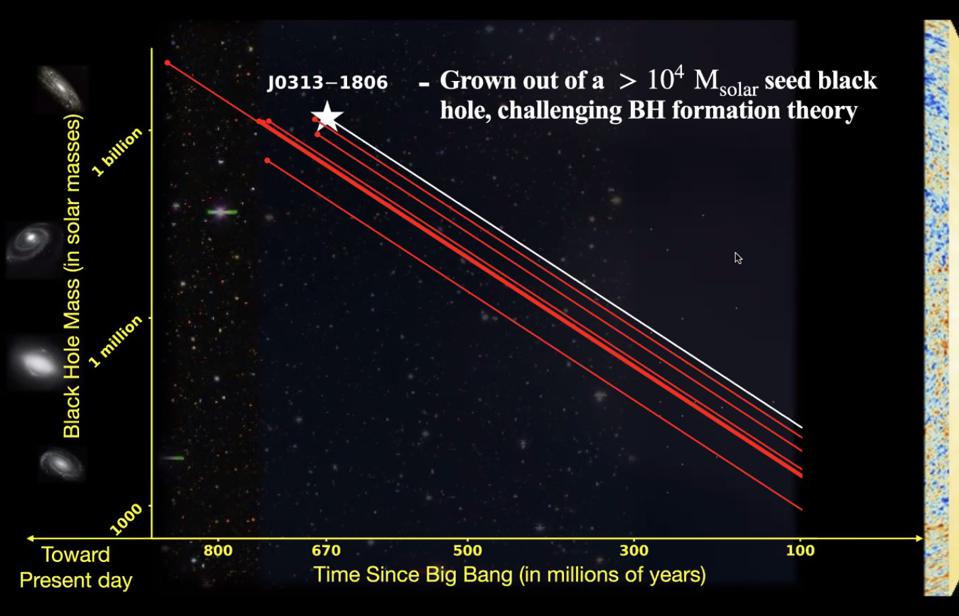
Of course, we don’t know for certain how valid this story is. We have precious few high-quality observations of host galaxies and their black holes at those early epochs, and even those only give us a few specific snapshots. If the Hubble Space Telescope and the observatories of its era have shown us what the Universe looks like, it’s fair to say that the major science goal of the James Webb Space Telescope will be to teach us how the Universe grew up. In concert with large optical and infrared ground-based observatories, as well as giant radio arrays such as ALMA, we’ll have plenty of opportunities to either verify, refine, or overthrow our current picture of supermassive black hole formation and growth.
For our Milky Way, we have some pretty solid evidence that at least five significant galactic mergers occurred over the past ~11 billion years of our cosmic history: once the original, seed galaxy that our modern Milky Way would grow into was already firmly established. By that point in cosmic history, based upon how galaxies grow, we would expect to have a supermassive black hole that was at least in the tens-of-millions of solar masses range. With the passage of more time, we’d expect that the black hole would only have grown larger.
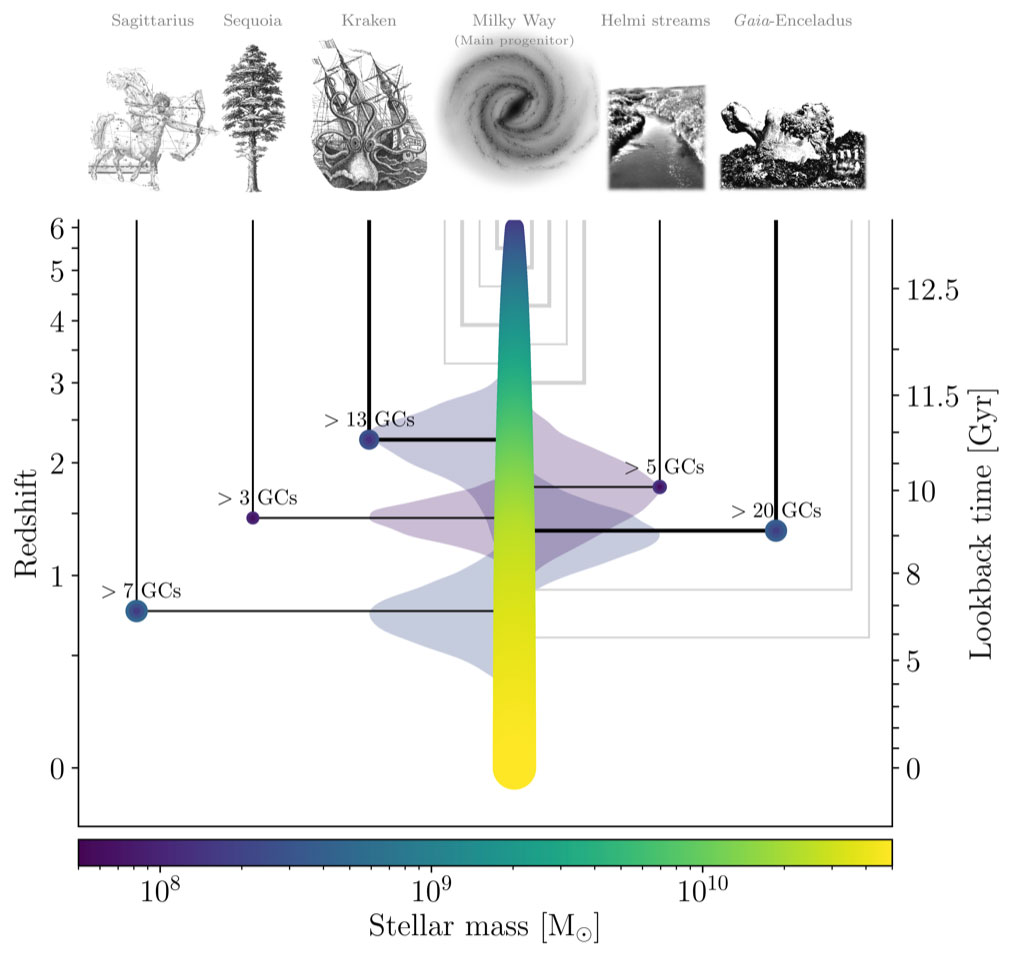
And yet today, some ~11 billion years later, our supermassive black hole is merely 4.3 million solar masses: less than 2% the mass of Andromeda’s supermassive black hole. It’s enough to make you wonder, “What is it, exactly, that happened (or didn’t happen) to us that resulted in our central black hole being so relatively small?”
It’s worth emphasizing that it is eminently possible that the Milky Way and our central black hole could simply be mundane. That perhaps nothing remarkable happened, and we’re simply able to make good enough observations from our close proximity to Sagittarius A* to determine its mass accurately. Perhaps many of these central black holes that we think are so massive might turn out to be smaller than we realize with our present technology.
But there’s a cosmic lesson that’s always worth remembering: at any moment, whenever we look out at an object in the Universe, we can only see the features whose evidence has survived until the present. This is true of our Solar System, which may have had more planets in the distant past, and it’s true of our galaxy, which may have had a much more massive central black hole a long time ago as well.
The Solar System, despite the tremendous difference in scale in comparison to the galaxy, is actually an excellent analogy. Now that we’ve discovered more than 5000 exoplanets, we know that our Solar System’s configuration — with all of the inner planets being small and rocky and all of the outer planets being large and gaseous — is not representative of what’s most common in the Universe. It’s likely that there was a fifth gas giant at one point, that it was ejected, and that the migration of the gas giants cleared out whatever early planets were present in the young Solar System.
Perhaps the reason we have Mercury, Venus, Earth, and Mars is because most of the material for forming planets was already used up in the inner part of the Solar System by the time their seeds came along, and this was as large as nature would let them get in the aftermath of that early “clearing out” event.
Well, it’s also plausible that the Milky Way formed a supermassive black hole the way that we believe most galaxies did, and that at some point we had a rather large one compared to what we see today. What could have happened? An event involving a large amount of gravitation — such as the merger of another galaxy or a strong enough “kick” from a nearby gravitational wave event — could have ejected it.
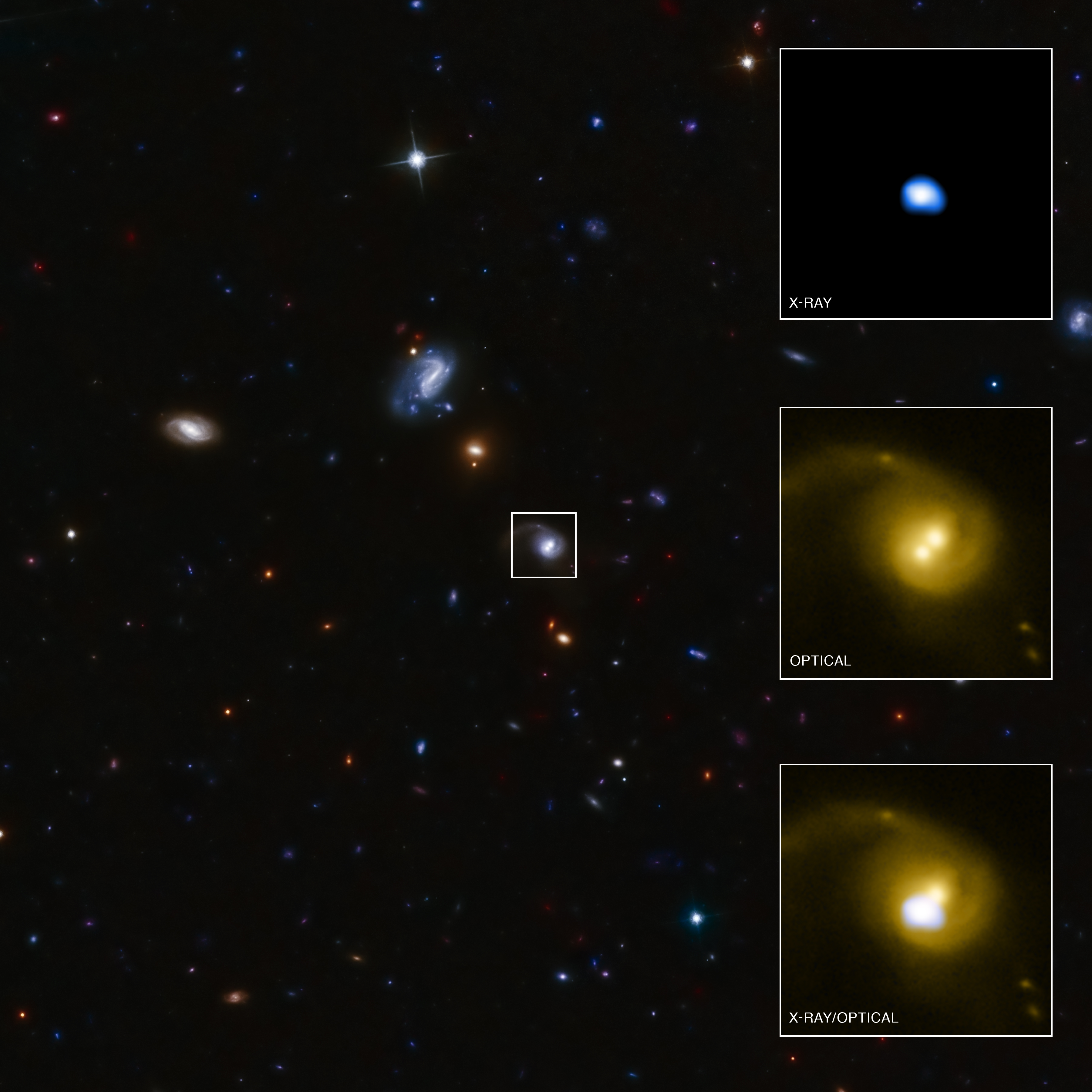
“Hold on,” you might object, “is there any evidence that supermassive black holes do get kicked out of galaxies?”
I’m glad you asked, because up until a decade ago, there wasn’t any. But back in 2012, astronomers were studying a system known as CID-42 in a galaxy some 4 billion light-years away. Previously, Hubble observations had revealed two distinct, compact sources that were observable in visible light: one at the center of the galaxy and one offset from the center.
Following up with NASA’s Chandra X-ray observatory, we found that there was a bright X-ray source consistent with heating from at least one supermassive black hole. Using the highest-resolution camera aboard Chandra, they found that the X-rays are only coming from one black hole, not two. But relative to one another, follow-up optical data showed that these two sources are moving away from one another at some 5 million kilometers-per-hour (~3 million miles-per-hour): well in excess of the escape velocity for a galaxy of that mass. As Dr. Francesa Civano, leader of the study, said back in 2012:
“It’s hard to believe that a supermassive black hole weighing millions of times the mass of the sun could be moved at all, let alone kicked out of a galaxy at enormous speed. But these new data support the idea that gravitational waves – ripples in the fabric of space first predicted by Albert Einstein but never detected directly – can exert an extremely powerful force.”
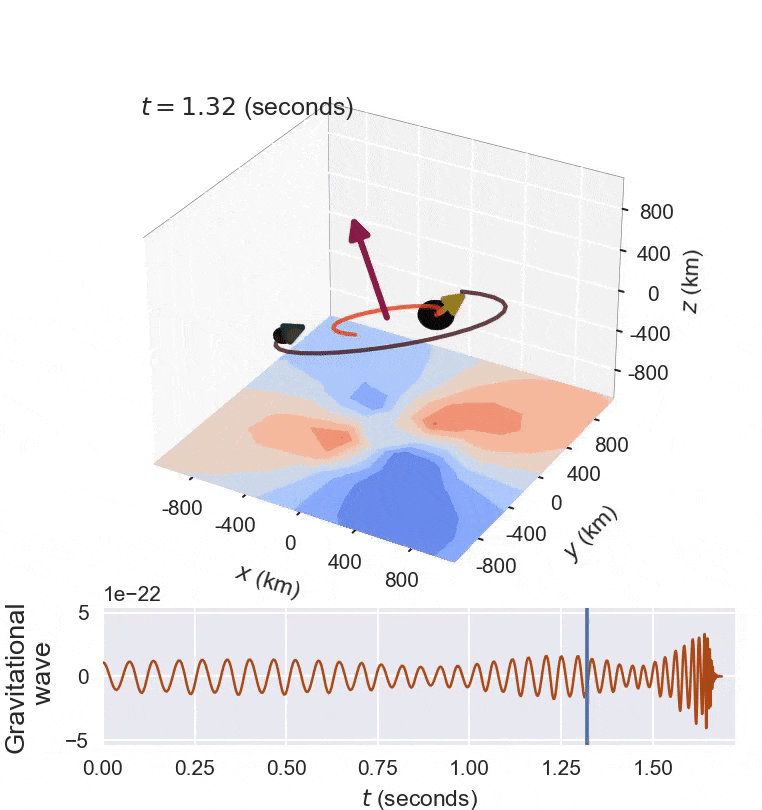
Recently, even though the science of gravitational wave astronomy is only about 5 years old at the time this article is being written, we got observational confirmation that such black hole “kicks” from gravitational waves aren’t particularly rare at all. Published on May 12, 2022, a study led by Dr. Vijay Varma showed that a black hole merger detected in 2020 — GW200129 — resulted in the most-merger black hole, owing to the relative properties of the progenitor black holes, receiving a tremendously fast “kick” of about 1500 km/s. For comparison, you only need to move at about one-third that speed to escape from the Milky Way’s gravitational pull.
We’ve now seen fast-moving black holes of both the stellar mass and supermassive varieties. We’ve also seen how mergers can impart these kicks to black holes, particularly when gravitational waves are produced in predominantly one direction, which arises when the black holes have unequal masses or spins, and large precessions.
Putting these pieces together, it’s entirely reasonable that one of the Milky Way’s mergers over the past ~11 billion years resulted in the ejection of its initial central, supermassive black hole. What remains, today, may be merely the result of what it’s been able to regrow in the time that’s passed since.
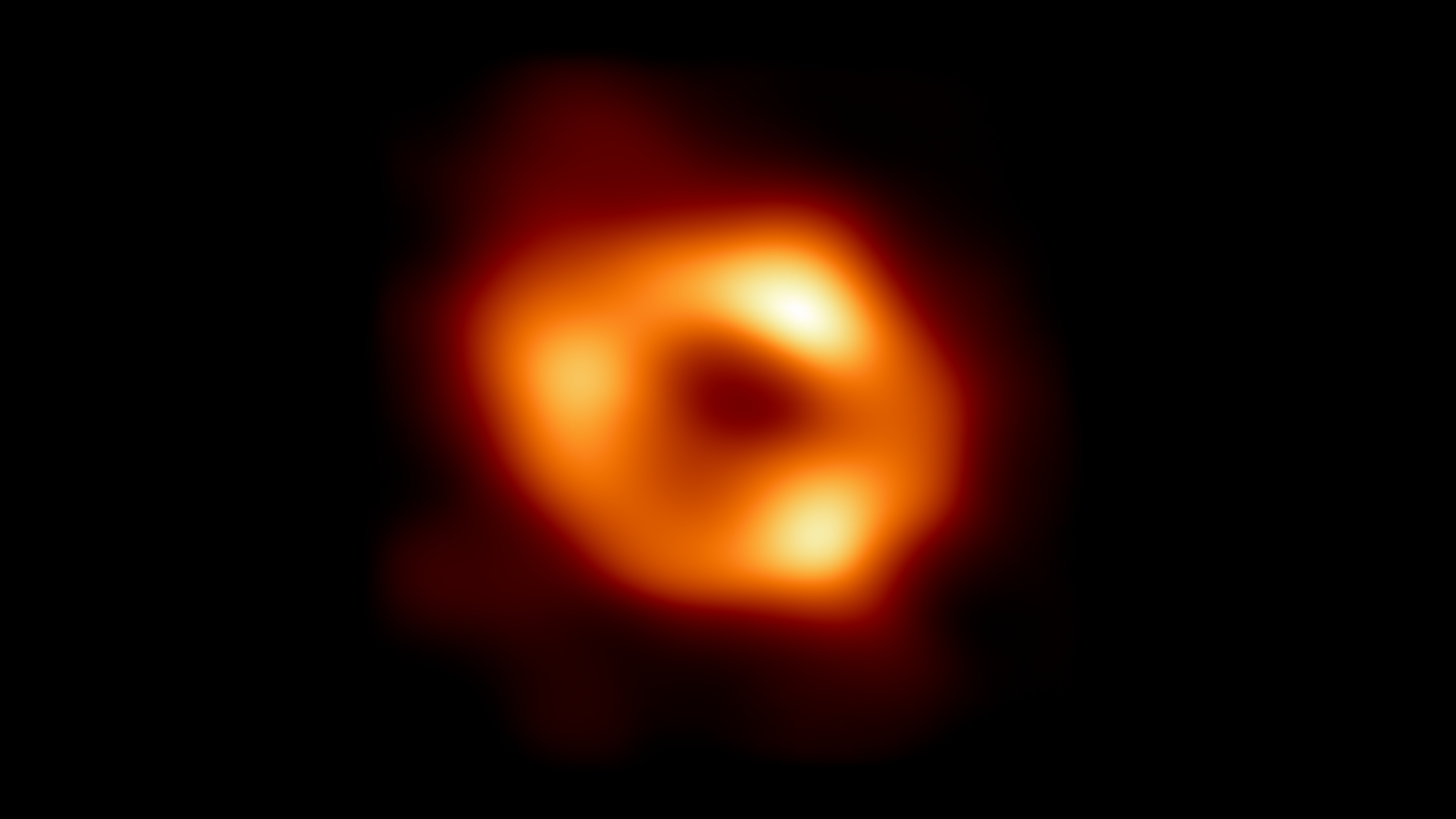
It cannot be emphasized enough what a remarkable achievement it is that the Event Horizon Telescope collaboration has, at long last, finally imaged the supermassive black hole at the center of the Milky Way: Sagittarius A*. It confirmed, to better than 95% precision, at least one thing that we already knew from measuring the motions of the stars in the galactic center’s vicinity: that there’s an object their weighing in at an impressive 4.3 million solar masses. Nevertheless, as large as that value is, it’s extraordinarily down there on the low end for a supermassive black hole.
In all known galaxies of comparable size to the Milky Way, there is no other that has a supermassive black hole of such a low mass as our own. Although there’s still so much remaining to learn about black holes, including how they form, grow, and co-evolve with their host galaxies, one tantalizingly plausible explanation is that a major black hole ejection happened relatively late-in-the-game here in our home galaxy. Even though all we have left are the survivors, and the long-ago ejected behemoth may now be tens of millions of light-years away, it’s possible that this is one aspect of our cosmic history that may someday fall within our reach.
